
CBGB was a New York City music club opened in 1973 by Hilly Kristal in the East Village in Manhattan, New York City. The club was previously a biker bar and before that was a dive bar. The letters CBGB were for Country, Bluegrass, Blues, Kristal's original vision for the club. But CBGB soon emerged as a famed and iconic venue for punk rock and new wave bands, including the Ramones, Dead Boys, Television, Patti Smith Group, Blondie, Madonna and Talking Heads.
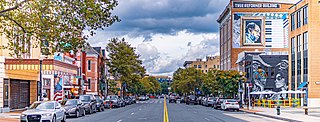
Washington, D.C., has been home to many prominent musicians and is particularly known for the musical genres of Jazz, Rhythm & Blues, bluegrass, punk rock and its locally-developed descendants hardcore and emo, and a local funk genre called go-go. The first major musical figure from District of Columbia was John Philip Sousa, a military brass band composer. Later figures include jazz musicians, such as Duke Ellington, Charlie Rouse, Buck Hill, Ron Holloway, Davey Yarborough, Michael A. Thomas, Butch Warren, and DeAndrey Howard; soul musicians, including Billy Stewart, The Unifics, The Moments, Ray, Goodman & Brown, Van McCoy, The Presidents, The Choice Four, Vernon Burch, guitarist Charles Pitts, and Sir Joe Quarterman & Free Soul.
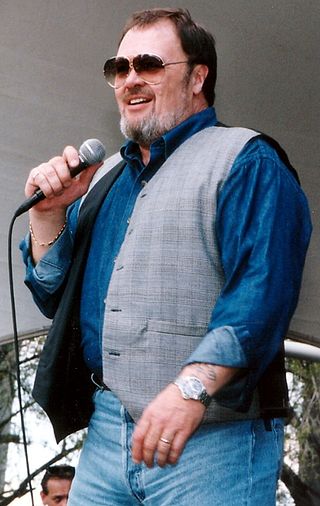
David Clayton-Thomas is a Grammy Award-winning Canadian musician, singer, and songwriter, best known as the lead vocalist of the American band Blood, Sweat & Tears. Clayton-Thomas has been inducted into the Canadian Music Hall of Fame and in 2007 his jazz/rock composition "Spinning Wheel" was enshrined in the Canadian Songwriter's Hall of Fame. In 2010, Clayton-Thomas received his star on Canada's Walk of Fame.

A music venue is any location used for a concert or musical performance. Music venues range in size and location, from a small coffeehouse for folk music shows, an outdoor bandshell or bandstand or a concert hall to an indoor sports stadium. Typically, different types of venues host different genres of music. Opera houses, bandshells, and concert halls host classical music performances, whereas public houses ("pubs"), nightclubs, and discothèques offer music in contemporary genres, such as rock, dance, country, and pop.
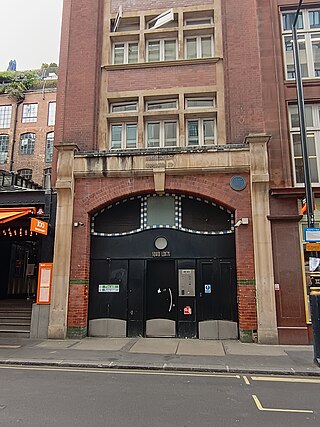
The Marquee Club was a music venue in London, England, which opened in 1958 with a range of jazz and skiffle acts. It was a small and relatively cheap club, in the heart of London's West End.

The Dirty Dozen Brass Band is an American brass band based in New Orleans, Louisiana. The ensemble was established in 1977, by Benny Jones and members of the Tornado Brass Band. The Dirty Dozen incorporated funk and bebop into the traditional New Orleans jazz style, and has since been a major influence on local music. They won the Grammy Award for Best American Roots Performance in 2023.

The Krannert Center for the Performing Arts is an educational and performing arts complex located at 500 South Goodwin Avenue in Urbana, Illinois and on the campus of the University of Illinois Urbana-Champaign. Herman C. Krannert, an industrialist who founded Inland Container Corporation and an alumnus of the university, and his wife, Ellnora Krannert, made a gift of $16 million that led to the Krannert Center's construction. Max Abramovitz, the architect who designed the facility, was also an Illinois alumnus.
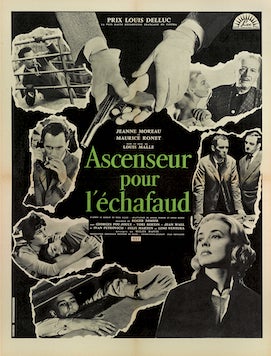
Elevator to the Gallows, also known as Frantic in the US and Lift to the Scaffold in the UK, is a 1958 French crime thriller film directed by Louis Malle, starring Jeanne Moreau and Maurice Ronet as illicit lovers whose murder plot starts to unravel after one of them becomes trapped in an elevator. The screenplay by Roger Nimier and Malle is based on the 1956 novel of the same name by Noël Calef.
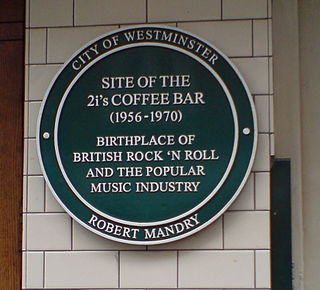
The 2i's Coffee Bar was a coffeehouse at 59 Old Compton Street in Soho, London, that was open from 1956 to 1970. It played a formative role in the emergence of Britain's skiffle and rock and roll music culture in the late 1950s, and several major stars including Tommy Steele and Cliff Richard were first discovered performing there.
The Bluebird Café is a 90-seat cafe and music venue in Green Hills, Nashville, Tennessee. The cafe features acoustic music performances and receives over 70,000 visitors annually.
The Matrix was a nightclub in San Francisco from 1965 to 1972 and was one of the keys to what eventually became known as the "San Francisco sound" in rock music. Located at 3138 Fillmore Street, in a 100-capacity beer-and-pizza shop, The Matrix opened 13 August 1965, showcasing Jefferson Airplane, which singer Marty Balin had put together as the club's "house band". Balin had persuaded three limited partners to put up $3,000 apiece to finance the club's opening, giving them 75 percent ownership, while he retained 25 percent for creating and managing it.

A jazz club is a venue where the primary entertainment is the performance of live jazz music, although some jazz clubs primarily focus on the study and/or promotion of jazz-music. Jazz clubs are usually a type of nightclub or bar, which is licensed to sell alcoholic beverages. Jazz clubs were in large rooms in the eras of Orchestral jazz and big band jazz, when bands were large and often augmented by a string section. Large rooms were also more common in the Swing era, because at that time, jazz was popular as a dance music, so the dancers needed space to move. With the transition to 1940s-era styles like Bebop and later styles such as soul jazz, small combos of musicians such as quartets and trios were mostly used, and the music became more of a music to listen to, rather than a form of dance music. As a result, smaller clubs with small stages became practical.
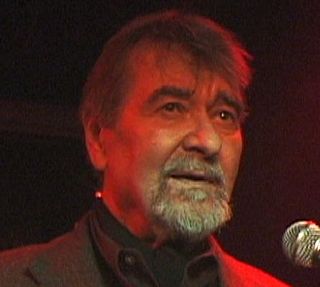
Giorgio Sergio Alessando Gomelsky was a filmmaker, impresario, music manager, songwriter and record producer. He was born in Georgia, grew up in Switzerland, and later lived in the United Kingdom and the United States.

The Cavern Club is a music venue on Mathew Street, Liverpool, England.

"Manteca" is one of the earliest foundational tunes of Afro-Cuban jazz. Co-written by Dizzy Gillespie, Chano Pozo and Gil Fuller in 1947, it is among the most famous of Gillespie's recordings and is "one of the most important records ever made in the United States", according to Gary Giddins of The Village Voice. "Manteca" is the first tune rhythmically based on the clave to become a jazz standard.
The Café Bohemia is a jazz club located at 15 Barrow Street in the Greenwich Village neighborhood of New York City. Its original run lasted from 1955 to 1960, and has been revived at its original location as of October 2019.

The Krazy Kat Klub—also known as The Kat and later rebranded as Throck's Studio—was a Bohemian cafe, speakeasy, and nightclub in Washington, D.C. during the historical era known as the Jazz Age. Founded in 1919 by 21-year-old portraitist and scenic designer Cleon "Throck" Throckmorton, the back-alley establishment functioned as a speakeasy after the passage of the Sheppard Bone-Dry Act by the U.S. Congress in March 1917 that imposed a ban on alcoholic beverages in the District of Columbia. Within a year of its founding, the speakeasy became notorious for its riotous performances of hot jazz music which often degenerated into mayhem.

The Upstage Club was a legendary coffee shop, music venue, and afterhours club in Asbury Park, New Jersey. The club is featured in the Rock and Roll Hall of Fame. Influential musicians such as Bruce Springsteen, Bill Chinnock, Southside Johnny, David Sancious, Little Steven Van Zandt, Garry Tallent, Vini Lopez, and Danny Federici first honed their live performance skills at the club. It was where the Asbury Jukes, Steel Mill, and the Blackberry Blues Band were formed.

The Garrick Cinema was a 199-seat movie house at 152 Bleecker Street in the Greenwich Village neighborhood of Lower Manhattan in New York City. Andy Warhol debuted many of his notable films in this building in the late 1960s. Frank Zappa and the Mothers of Invention played here nightly for 6 months in 1967.















